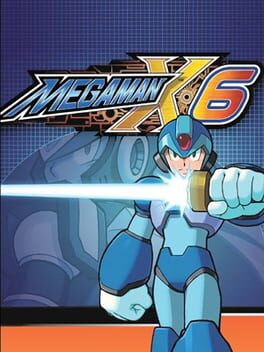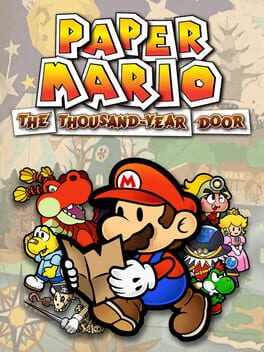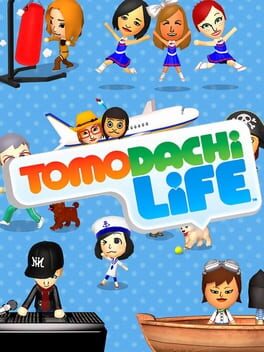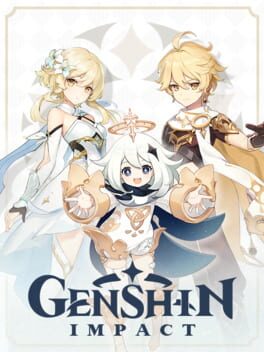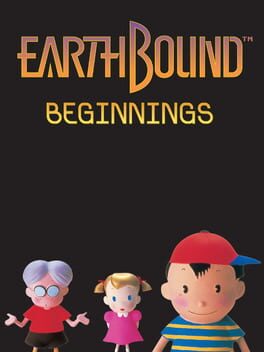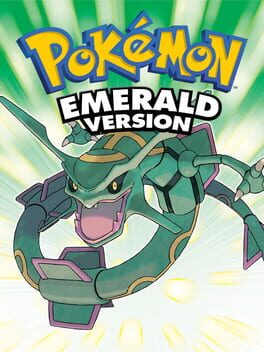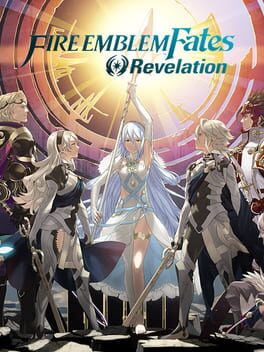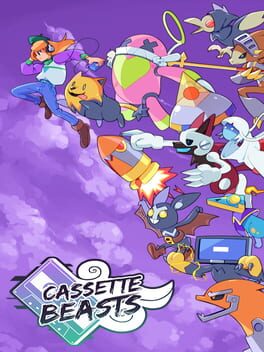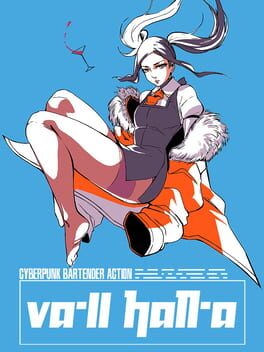battlehuntz
2018
2001
My original review referred to this as 9/11 for the X series. A comparison I find apt, because like 9/11, it may be a tragedy, but it’s also opened a door for some solid dark humor about its situation and everything around it. X7 is not funny, and not built on a solid engine and foundation. So it doesn’t get such honors.
2013
2020
2024
This review contains spoilers
Being blunt, this is a remake I love very much, yet have reservations on all the same. This game is a retelling of a story that’s inherently important to me about living your life to the fullest despite its brevity. It’s common for people to say Persona 3 is this depressing game entirely about death rather than that it’s about life, complete with mortality and its potential brevity, is a gift and what matters most is what we make of the time we’re given and how we impact others in that time. Life is about sharing joy and sorrow, and spending time with others and impacting them. Though our main character’s life is short, this is not some heart wrenching thing to dwell on. Though told through a game which poignantly uses suicide imagery to awaken the titular powers, “Memento Mori” means to remember we are mortal. The game opens with a statement that you have a year to live, and as time flows by rather quickly, you realize that you’ve lived an entire lifetime’s worth of experienced in that one year. There’s beauty in that. You simply figured your life out before the rest of your friends, and while that may be sad, I needed this game a lot at the moment, since in the wake of losing my dad last year, I’d felt pretty lost in my own life, debating on letting it just reach an ending too. Of course, that wasn’t a constant feeling, but having a game tell you that life is a gift meant to be shared with others is helpful. Though it can be brief or long, it is meant to be shared, and that mortality is a beautiful thing that lets us make the most of the time we have, and to live it to the fullest, like each day could be our last. What matters most is how we use our lives, not how long they are. Mortality is tackled in two ways I’d like to highlight, namely from the characters with reduced lifespans like Akinari and Shinjiro, and from Aigis, a robot incapable of aging. Akinari’s story is of him accepting his death from a genetic disease at a young age, but using his last days to create something meaningful through writing a childrens’ story which is allegorical to his own life. Though his life is one many could mark as simply sad and depressing, Akinari represents someone living a short, yet full life, who lives on and impacts others through his work, with his story being shown to have become a rather famous one by the time of Persona 4. Shinjiro is someone who seeks to atone for inadverdently killing Ken’s mother when his Persona went berserk. Though he initially does this through suppressants which shorten his lifespan, his changed resolve to fight to protect Ken and eventually die for him to atone is a powerful one which changes the course of the entire narrative. Shinjiro touched others regardless of the length of his life, and taught them to fight on and keep living—even making Ken realize suicide would not be closure. In a lot of cases, we are asked to pity characters like Akinari and Shinjiro, but Persona 3 flips this. These characters are very blatantly disabled and with shortened lifespans, but they are not inhibited from living to the fullest due to that. Media tends to be subtly ableist in such regards, but Akinari and Shinjiro represent the ability to live one’s life to the fullest no matter what, whilst also serving as micronarratives of our own protagonist and his eventual death at the end. Aigis, meanwhile, learns to become human and feel human emotions through spending time with SEES, but her social link is a reminder of mortality being a beautiful thing, as she cannot age, or die naturally. Aigis is able to connect with and befriend her team, and even experience love, yet is doomed to outlive her team. Of course, she realizes her life is still beautiful and meaningful, having realized from a near death experience that she wishes to live, but there’s still an inherent tragedy to the fact she can’t die naturally. Mortality is what allows us to derive meaning from our lives and live them to the fullest, as again, any day could be our last.
To talk about negatives, I’d like to preface that I do think the game is mostly gorgeous and capable of looking great. The bulk of in-engine cutscenes look excellent and are directed well, the new models are very expressive and well animated, the menus andui and their live-2D aesthetic are stellar, and critical cut-ins and portraits look great. However, there are times the game feels nauseatingly bright. I lowered brightness by three stages, and I felt this made it much better, but some areas were lacking in the dinge or grime of their original counterparts. Namely, Iwatodai Dorm is now so bright, that coupled with its green and red aesthetic, it looks like a salad topped with tomatoes. Other times, the lighting is so bright that the shading on the models fails, so you’ll see them very stiffly outlined, without textures. This is most apparant in a scene where Junpei shines a flashlight on himself, and during the beach trip. Otherwise, I feel as though the cutscene direction is decidedly weaker in a couple of spots. Namely, the original opening, which showed you arriving to the Dorm and signing the contract during the Dark Hour, which gave a sense of foreboding atmosphere, is altered now. Instead, the bulk of arriving at the dorm is done through gameplay this time. The haunting shot composition of walking through coffins, or Pharos eerily demanding you sign a contract is lost, and I fear that greatly tarnishes our first encounter with the Dark Hour. Similarly, the scene where you awaken your Persona and unleash Thanatos and the Death Arcana sealed within you against the Magician was initially shot choppily due to limited resources, yet directed as such to give it a horrific atmosphere as the protagonist’s first exposure to shadows. In this case, said scene is done in-engine, and flows fluidly, not allowing the brutality of Thanatos to ne displayed nearly as efficiently. Though the initial scene decidedly invoked dread, the new one feels far more fluid and less hectic, not leaving time for dread to set in. While most of the new 2D cutscenes look good, some come off as jarring or just bizarrely placed. Did the budget need to go toward a cutscene of Yukari showering before the Lovers fight? Or toward a choppily animated sequence of the group debuting their (admittedly really cool) new SEES uniforms? And the absence of The Answer (though leakers say it will be DLC) feels like a bizarre choice on release when the game opts to remake the Persona 3 FES story and content. It is the conclusion to SEES story, and an epilogue of sorts. It’d be nice to include it with the base game, considering you are paying 70 dollars for a remake of a 17 year old game. Losing the female MC from Portable is a thornier situation. Her story requires a new set of voicework, new characters, and new songs, so I understand its exclusion. However, she does deserve to be in a game with proper cutscenes, and told a unique perspective of the same story. Her seemingly not even being DLC is quite sad, and her inclusion was something that was important to transfem fans, like myself, women in general who wanted to immerse, or anyone who wanted to romance a male character. While I don’t see the protagonist as an extension of myself in P3, and moreso as a vessel we get to play the game through the eyes of, her perspective was interesting all the same, and will be missed, though it is not a dealbreaker for me. It just means Reload, while great, isn’t really “definitive,” nor is any version of the game.
The new soundtrack is divisive, with a lot of people being torn on it or disliking it. I’ll be up front in saying I prefer the original OST, and understand such complaints. However, a lot of the altered remixes are referencing the Reincarnation versions of songs, and I find that to be neat, though I don’t always click with the new vocals as much as the original. However, some remixes are standouts. The new Changing Seasons vocals are great and really give it a nice vibe, and the Master of Shadow remix is an absolute jam. I think the newly added songs, like Full Moon Full Life, Color the Night, and It’s Going Down all sound great, though. They feel natural and are never at risk of being stunted by a point of comparison. However, lacking any toggle for the original soundtrack, even via DLC, is bizarre. This is ATLUS. You’d expect them to have some penny-pinching scheme.
The voicework here is stellar. It’s controversial to have the cast replaced, but homages exist with most of the original VAs having minor vocal roles. Zeno Robinson’s Junpei is a standout, with his vocal range being incredible. He’s able to be funny and extremely emotional, and it is amazing. The entire cast is exceptional, with other standouts like Justice Slocum’s Shinjiro and Shelby Young’s Yuko feeling so natural to listen to. Props to Aleks Le for juggling voicing both the protagonist AND Ryoji; doomed yaoi with your own characters is very awesome.
As for positives beyond the story and voicework, I’ll talk about the overhauls and new content that made me really click with this remake. Firstly, bless and curse skills are reworked to be like like they were in Persona 5, so characters like Ken and Koromaru are so much more viable when their main elements aren’t just instakill related. The shift (this game’s baton pass equivalent) and theurgy systems’ inclusions worried me beyond belief initially, as they could have turned the game as easy as Persona 5 Royal was. However, that wasn’t the case here. Though every character can shift, any boosts from it, such as SP or stats, are tied to skills or items, and are not as easily and openly forced on the player, so it creates an excellent form of that mechanic. Similarly, Theurgy worried me in that it could function like Royal’s Showtime mechanic, being a well-animated win button in most fights. This wasn’t the case. Theurgy became something I would conserve for tougher fights and strategize around, delivering stronger attacks yet never instantly winning boss battles. In fact, boss stats were designed to accommodate the function, making it even more welcome of an addition. Smaller gameplay tweaks exist in the form of characteristics, which are latent buffs characters gain once hung out with at the dorm a select amount of times, and these are nice conveniences as well. Be it absurd SP nerfs for healing like Yukari, or turning Junpei into a critical hit machine, these characteristics are extremely fun to work with and help to make all of the cast feel viable. The most standout aspect of the new content, though, is the additions it made to the story via added scenes and Hangouts. Added scenes help to characterize the antagonists, Strega, especially their leader, Takaya, far better than they initially were. Takaya’s paralleling with the protagonist by presenting himself as a false-messiah of sorts makes him his most intimidating yet in this version, with more scenes existing to contextualize him and his beliefs and role in the story. Hangouts were created as story content for the male party members and Ryoji, as they wouldn’t have social links without the female protagonist. While I’m of the belief that the SEES members in general don’t need social links due to growing and developing constantly within the story, hangouts serve as excellent supplementary material and characterization for them. It’s emotionally fulfilling to learn what these characters stand for and bond even more with them, and even adds extra personas upon completing hangout chains, as if to treat them with the same respect as social links. If you love these characters, you will love the hangout feature.
Ultimately, Reload is near and dear to me. It has flaws, and I’m going to be open about that. Part of me wants to say “fuck you, it’s a 5/5,” but I am too open about the issues I have to do that. That doesn’t mean I don’t adore it, though. It’s just a case where you’ll experience Persona 3 in one of three ways. What you consider “definitive” is perhaps up to you at this point. As it stands, we have 3 versions of this story, and all are worth playing on their own merits.
To talk about negatives, I’d like to preface that I do think the game is mostly gorgeous and capable of looking great. The bulk of in-engine cutscenes look excellent and are directed well, the new models are very expressive and well animated, the menus andui and their live-2D aesthetic are stellar, and critical cut-ins and portraits look great. However, there are times the game feels nauseatingly bright. I lowered brightness by three stages, and I felt this made it much better, but some areas were lacking in the dinge or grime of their original counterparts. Namely, Iwatodai Dorm is now so bright, that coupled with its green and red aesthetic, it looks like a salad topped with tomatoes. Other times, the lighting is so bright that the shading on the models fails, so you’ll see them very stiffly outlined, without textures. This is most apparant in a scene where Junpei shines a flashlight on himself, and during the beach trip. Otherwise, I feel as though the cutscene direction is decidedly weaker in a couple of spots. Namely, the original opening, which showed you arriving to the Dorm and signing the contract during the Dark Hour, which gave a sense of foreboding atmosphere, is altered now. Instead, the bulk of arriving at the dorm is done through gameplay this time. The haunting shot composition of walking through coffins, or Pharos eerily demanding you sign a contract is lost, and I fear that greatly tarnishes our first encounter with the Dark Hour. Similarly, the scene where you awaken your Persona and unleash Thanatos and the Death Arcana sealed within you against the Magician was initially shot choppily due to limited resources, yet directed as such to give it a horrific atmosphere as the protagonist’s first exposure to shadows. In this case, said scene is done in-engine, and flows fluidly, not allowing the brutality of Thanatos to ne displayed nearly as efficiently. Though the initial scene decidedly invoked dread, the new one feels far more fluid and less hectic, not leaving time for dread to set in. While most of the new 2D cutscenes look good, some come off as jarring or just bizarrely placed. Did the budget need to go toward a cutscene of Yukari showering before the Lovers fight? Or toward a choppily animated sequence of the group debuting their (admittedly really cool) new SEES uniforms? And the absence of The Answer (though leakers say it will be DLC) feels like a bizarre choice on release when the game opts to remake the Persona 3 FES story and content. It is the conclusion to SEES story, and an epilogue of sorts. It’d be nice to include it with the base game, considering you are paying 70 dollars for a remake of a 17 year old game. Losing the female MC from Portable is a thornier situation. Her story requires a new set of voicework, new characters, and new songs, so I understand its exclusion. However, she does deserve to be in a game with proper cutscenes, and told a unique perspective of the same story. Her seemingly not even being DLC is quite sad, and her inclusion was something that was important to transfem fans, like myself, women in general who wanted to immerse, or anyone who wanted to romance a male character. While I don’t see the protagonist as an extension of myself in P3, and moreso as a vessel we get to play the game through the eyes of, her perspective was interesting all the same, and will be missed, though it is not a dealbreaker for me. It just means Reload, while great, isn’t really “definitive,” nor is any version of the game.
The new soundtrack is divisive, with a lot of people being torn on it or disliking it. I’ll be up front in saying I prefer the original OST, and understand such complaints. However, a lot of the altered remixes are referencing the Reincarnation versions of songs, and I find that to be neat, though I don’t always click with the new vocals as much as the original. However, some remixes are standouts. The new Changing Seasons vocals are great and really give it a nice vibe, and the Master of Shadow remix is an absolute jam. I think the newly added songs, like Full Moon Full Life, Color the Night, and It’s Going Down all sound great, though. They feel natural and are never at risk of being stunted by a point of comparison. However, lacking any toggle for the original soundtrack, even via DLC, is bizarre. This is ATLUS. You’d expect them to have some penny-pinching scheme.
The voicework here is stellar. It’s controversial to have the cast replaced, but homages exist with most of the original VAs having minor vocal roles. Zeno Robinson’s Junpei is a standout, with his vocal range being incredible. He’s able to be funny and extremely emotional, and it is amazing. The entire cast is exceptional, with other standouts like Justice Slocum’s Shinjiro and Shelby Young’s Yuko feeling so natural to listen to. Props to Aleks Le for juggling voicing both the protagonist AND Ryoji; doomed yaoi with your own characters is very awesome.
As for positives beyond the story and voicework, I’ll talk about the overhauls and new content that made me really click with this remake. Firstly, bless and curse skills are reworked to be like like they were in Persona 5, so characters like Ken and Koromaru are so much more viable when their main elements aren’t just instakill related. The shift (this game’s baton pass equivalent) and theurgy systems’ inclusions worried me beyond belief initially, as they could have turned the game as easy as Persona 5 Royal was. However, that wasn’t the case here. Though every character can shift, any boosts from it, such as SP or stats, are tied to skills or items, and are not as easily and openly forced on the player, so it creates an excellent form of that mechanic. Similarly, Theurgy worried me in that it could function like Royal’s Showtime mechanic, being a well-animated win button in most fights. This wasn’t the case. Theurgy became something I would conserve for tougher fights and strategize around, delivering stronger attacks yet never instantly winning boss battles. In fact, boss stats were designed to accommodate the function, making it even more welcome of an addition. Smaller gameplay tweaks exist in the form of characteristics, which are latent buffs characters gain once hung out with at the dorm a select amount of times, and these are nice conveniences as well. Be it absurd SP nerfs for healing like Yukari, or turning Junpei into a critical hit machine, these characteristics are extremely fun to work with and help to make all of the cast feel viable. The most standout aspect of the new content, though, is the additions it made to the story via added scenes and Hangouts. Added scenes help to characterize the antagonists, Strega, especially their leader, Takaya, far better than they initially were. Takaya’s paralleling with the protagonist by presenting himself as a false-messiah of sorts makes him his most intimidating yet in this version, with more scenes existing to contextualize him and his beliefs and role in the story. Hangouts were created as story content for the male party members and Ryoji, as they wouldn’t have social links without the female protagonist. While I’m of the belief that the SEES members in general don’t need social links due to growing and developing constantly within the story, hangouts serve as excellent supplementary material and characterization for them. It’s emotionally fulfilling to learn what these characters stand for and bond even more with them, and even adds extra personas upon completing hangout chains, as if to treat them with the same respect as social links. If you love these characters, you will love the hangout feature.
Ultimately, Reload is near and dear to me. It has flaws, and I’m going to be open about that. Part of me wants to say “fuck you, it’s a 5/5,” but I am too open about the issues I have to do that. That doesn’t mean I don’t adore it, though. It’s just a case where you’ll experience Persona 3 in one of three ways. What you consider “definitive” is perhaps up to you at this point. As it stands, we have 3 versions of this story, and all are worth playing on their own merits.
2023
Christian Whitehead’s fascination with the SEGA Saturn should be known by this point, given Sonic Mania’s use of low poly 3D models and the Saturn’s color schemes and aesthetics. Penny’s Big Breakaway feels like a step further in that department, being the 3D Saturn-esque platformer that had been worked on post-Sonic Mania. Its vibrant, lower poly aesthetic really makes so much of the platforming it demands charming. It’s genuinely so well stylized and fun. I still have no idea what the hell kind of animal Penny is based on, though. A soundtrack by Tee Lopes felt like an inevitability, but he and Sean Biallo create a jazzy and fun soundscape that further capitalizes on that Saturn aesthetic. Movement and platforming are fluid and rewarding beyond belief, and absolutely are capitalized on by pretty ruthless score caps for doing well. Like any good Sonic ranking system, I think this creates a score and speedrun paradise of sorts. And while you can use jank to your advantage, there’s some deaths and run failures that I feel weren’t my fault. Far from irreparably buggy, but you will get stuck in a wall a few times, and that sucks. Don’t let that discourage you though. This is a great time and a beyond charming experience. Lots of childlike wonder and whimsy here, and I really couldn’t put it down. I saw one critic call the bosses too hard, and I personally couldn’t disagree more; the bosses feel far too easy, if anything. Also, please don’t get this for the Switch; you do not want 30 FPS for this game.
I replayed in April 2021 during exam season while stressing about failing Stats, my last required Math. I started to have heart palpitations about two days in. This game for sure caused it. This game is a fucking cultural wasteland. You can also fuck your cousin. Really incredible how they made this one. It's going to be gone from the eShop a whole month earlier too. People say it's bad to think that's a good thing. I ask if they have 400 hours in this game like I do. My hatred is measured and understandable. Fuck this game you will get subtweeted and dogpiled for disliking it it doesn't change that it sucks ass.
2023
That was fucking awesome. Excellent monster catcher. Of course it takes some aspects from Pokemon, namely the creature collection and evolution aspect, but the battle system and its volatility and difficulty feel MUCH more inspired by Megaten, which is even more evident when you realize the story takes many of its beats from games like Persona 3 (there’s literally a character who’s just like Koromaru here). It’s also very pleasing to look at, with a style of chibi sprites roaming around a 3d-rendered overworld, and obviously that’s pretty clearly reminiscient of the graphical style of Pokemon Gens 4 and 5. The open nature of the game scales very well too, and in many ways the map and its grid, and to a degree, the premise, remind me of old handheld Zelda games, particularly the ones on the GameBoy Color and Advance. If any two games inspired narrative aspects here, I feel like it’s a marriage of Link’s Awakening and Persona 3. Does that mean it’s anywhere near as melancholic or existential at times? No, but it has the capability to talk on that. Referring to this as a “Pokemon Clone” is a disservice. It’s a love letter to that series, but it’s also its own thing. As for negatives, the postgame quests are very grindy and repetitive, but the core game is so utterly addictive that it can offset this. Also the game can run a bit oddly. It’ll stutter in some cases to load in the environments. Nothing unplayable, but your immersion can and will be gutted at moments like that. Overall an amazing time.
2013

